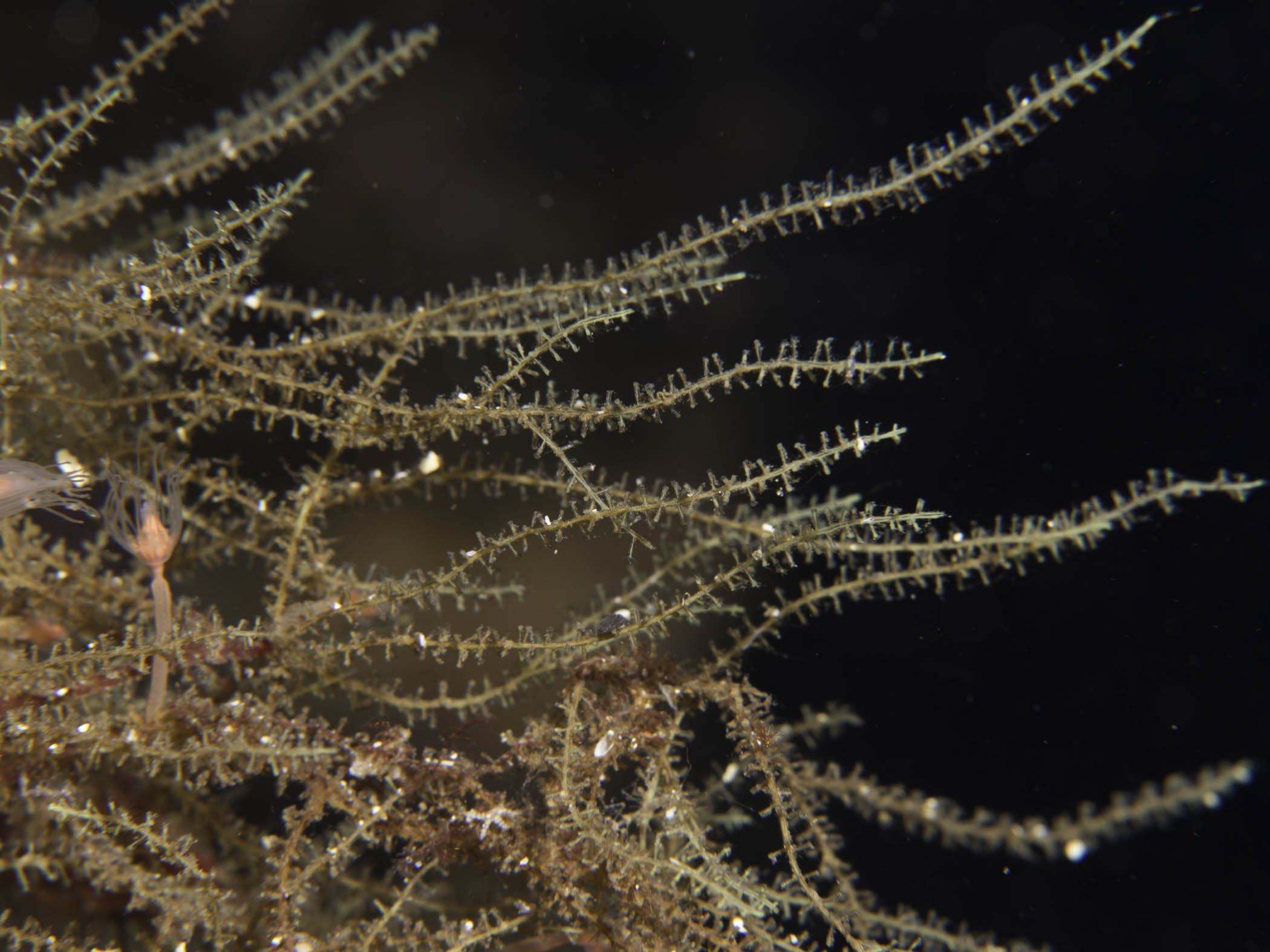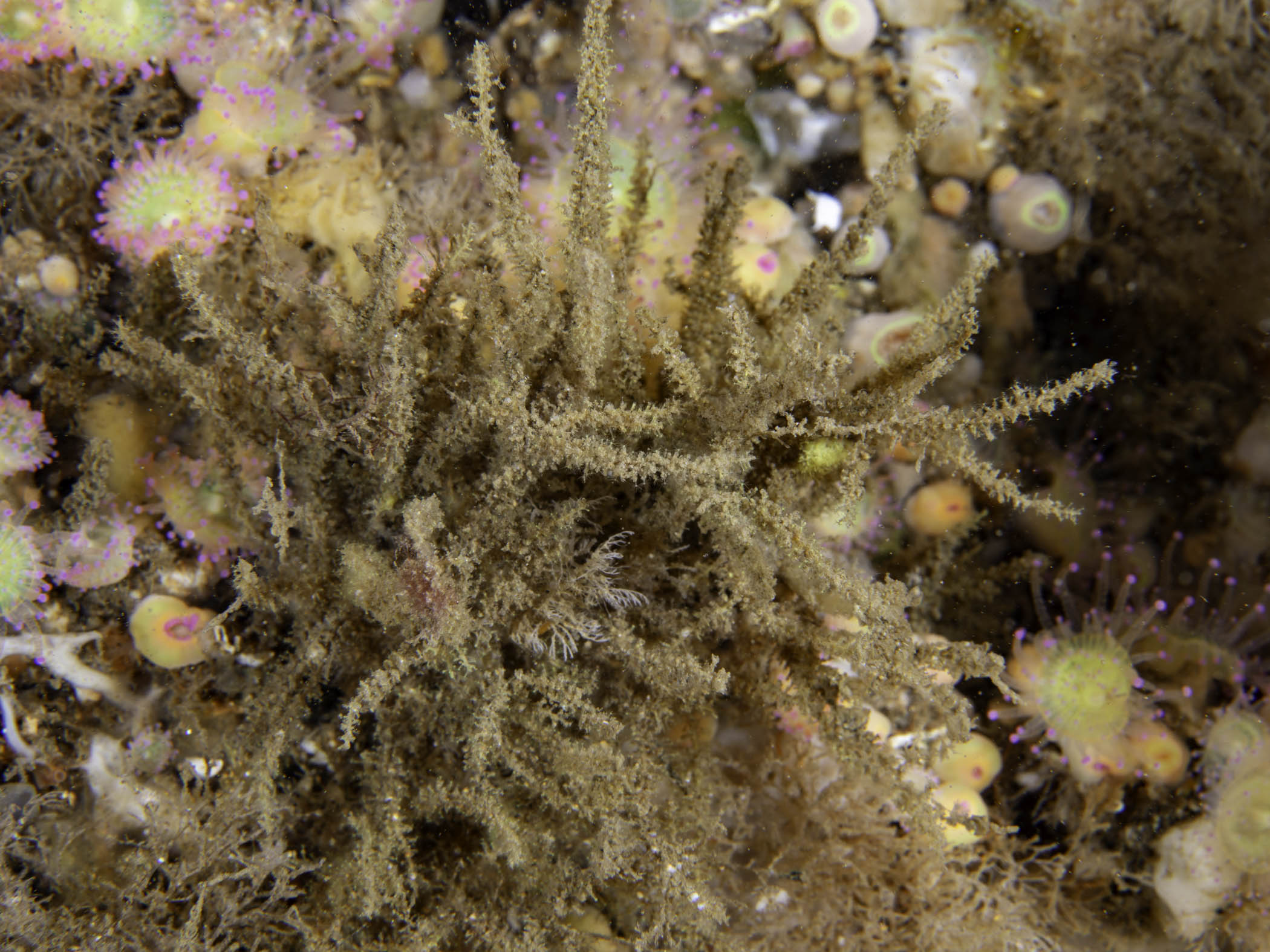| CNIDARIA : Leptothecata : Lafoeidae | SEA ANEMONES AND HYDROIDS |
Lafoea dumosa (Fleming, 1828)
 |
| Lafoea dumosa |
Description: The main stem of the colony is erect and composed of several fibres. The hydrothecae arise irregularly from all sides of the stem and branches. They are long and tubular in shape, tapering towards their base. They are attached to the main stem by a short pedicel. The rim of the hydrotheca lacks any opercular flaps. Gonothecae are rarely produced. Erect colonies to 100mm.
Habitat: The erect form is normally found on vertical surfaces or beneath overhangs, attached to bedrock or boulders.
Distribution: Widespread around the British Isles except in the southern North Sea and eastern English Channel.
Similar Species: It is debatable whether the other forms of Lafoea which consist of creeping stolons on other hydroids are distinct species.
Key Identification Features:
- Simple tubular hydrothecae
- Greenish coloration
Distribution Map from NBN: Lafoea dumosa at National Biodiversity Network mapping facility, data for UK.
iNaturalist: Lafoea dumosa at iNaturalist World Species Observations database.
GBIF data for Lafoea dumosa
WoRMS: Lafoea dumosa at World Register of Marine Species. Accepted name: Lafoea dumosa (Fleming, 1820). AphiaID: 117702.
Classification: Biota; Animalia; Cnidaria; Medusozoa; Hydrozoa; Hydroidolina; Leptothecata; Lafoeidae; Lafoea
| Previous species | Next species |
| Picton, B.E. & Morrow, C.C. (2024). Lafoea dumosa. (Fleming, 1828). [In] Encyclopedia of Marine Life of Britain and Ireland. https://www2.habitas.org.uk/marbiop-ni/speciesaccounts.php?item=D5160. Accessed on 2025-04-08 |
